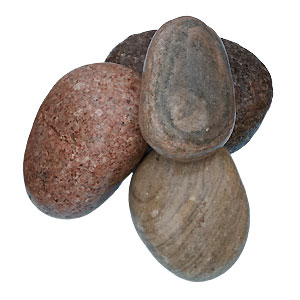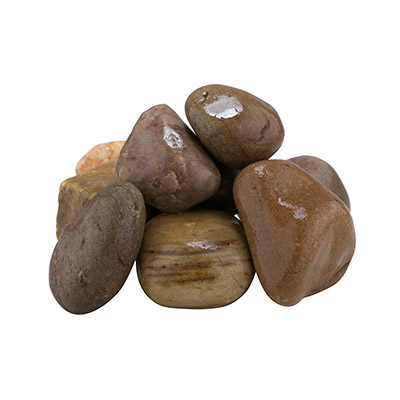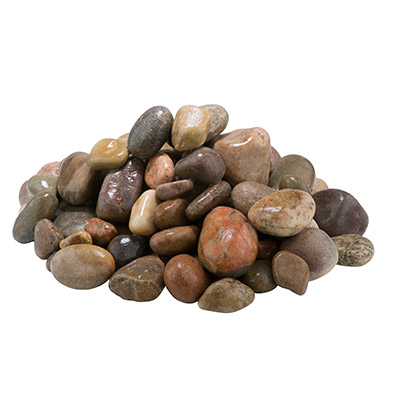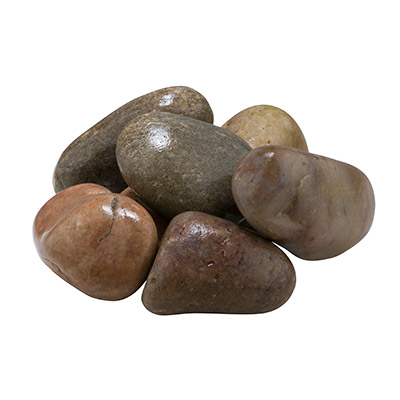Obtained from a number of the finest suppliers, our Scottish cobbles are carefully selected from responsible sources to bring the wild beauty of a Highland coastline into any garden or outdoor space.
Perfect for adding a finishing touch to paths and borders, every Scottish pebble is unique, displaying a rich variety of natural, earthy tones that change depending on the weather, light conditions and where they’re placed. When combined in an area, the effect of Scottish pebbles is elegantly beautiful.
Scottish pebbles are wonderful for adding interest to wet areas in the garden where they will glisten to reveal a myriad of subtle marbleised patterns. Naturally rounded by the elements, Scottish cobbles have a gorgeously smooth finish, require very little maintenance and are a safe option for those with children or pets.
Where do Scottish cobbles come from?
We’ve all walked along a stretch of beach and marvelled at the unending colours, sizes and textures of the pebbles that line where the tide has washed them to. The relentless rolling waves erode the stone to produce a polished, rounded effect.
As Scottish pebbles come from some of the wildest parts of the UK - the Highlands and Islands of Scotland - the often rough sea conditions that have battered this most rugged and remote area, creates a particularly smooth stone from the constant tumbling effect. A lot of Scottish cobbles are actually sourced from former prehistoric beaches someway inland where they have lain for millions of years.

What makes Scottish cobbles so beautiful?
It’s almost as if every Scottish pebble has its own story to tell. A little like gazing into a slab of marble, each is unique with the veins of quartz that wriggle through the stone. Some Scottish pebbles have a multitude of hues and patterns while others are solid stones of just one colour.
When laid in an area, the effect is a mosaic of earthy tones with varying matt and glossy finishes. Scottish pebbles offer a classic beach palette of colours. When dry, the cobbles are typically a light grey with shades of whites, greens, browns and pinks. You might also note brick reds, peach shades and some gold. When wet, the effect of an area made up of Scottish pebbles is transformed.
Scottish cobbles and water
If you’ve been to a beach scattered with pebbles just as the tide has gone out, you’ll recognise the glistening effect as the light dances on each stone as they slowly dry.
That image is what makes Scottish garden pebbles so attractive when combined with water - either slightly submerged or bordering a water feature. The natural beauty of each pebble is magnified by water to bring out the individual features of each and every stone magnificently.
Stunning when used to line the borders of ponds or streams, Scottish pebbles also look fabulous at the base of a cascading water feature or a fountain as the movement of the water creates a shimmering effect on the stone. As Scottish pebbles come from areas where there is, or was once, water then the overall effect is particularly natural.

Mixing up sizes of Scottish cobbles
Scottish pebbles come in a range of sizes and can be combined with Scottish cobbles to add variety to spaces and to draw the eye through the garden or to a certain area. Alternating the size and texture in this way can change the perspective of an outdoor space to create depth and width.
Scottish cobbles are a beautifully practical option too
As well as creating serene outdoor spaces, using Scottish pebbles has a number of practical benefits too. There are no sharp edges like other types of aggregate meaning Scottish pebbles are smooth to walk on for paths and ideal for areas where young children play or four-legged friends frolic.
Using Scottish cobbles is also a natural way to inhibit weed growth and to improve drainage in areas of planting. Landscaping with pebbles is very on-trend in the world of gardens right now too. We’ve seen displays using Scottish pebbles at the Chelsea Flower Show and other RHS festivals that are held around the country to enhance everything from Japanese gardens to water gardens to stunning rockery displays.








